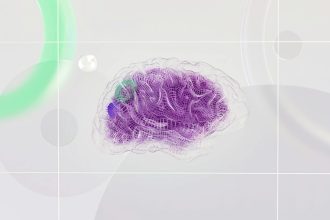Technology’s Role in UN Peacekeeping
## Technology’s Role in UN Peacekeeping: Balancing Innovation and Independence
### The Double-Edged Sword of Tech in Global Stability
The United Nations peacekeeping operations, a cornerstone of international efforts to maintain peace and security, are increasingly relying on technological advancements. From advanced surveillance systems to sophisticated communication platforms, technology promises to enhance efficiency, improve situational awareness, and potentially save lives. However, this reliance also introduces complex challenges, particularly concerning the influence of major technology providers and the imperative of maintaining operational independence.
### Navigating the Technological Landscape of Peacekeeping
The integration of technology into UN peacekeeping is not a new phenomenon, but its scope and sophistication have grown exponentially. These tools are deployed across various facets of missions, aiming to provide peacekeepers with better intelligence, more secure communication channels, and improved logistical support.
#### Enhancing Situational Awareness
* **Drones and Satellite Imagery:** Providing real-time aerial views of operational areas, helping to monitor troop movements, identify potential threats, and assess damage.
* **Sensor Networks:** Deploying seismic, acoustic, and other sensors to detect activity in remote or dangerous zones.
* **Data Analytics:** Processing vast amounts of information from various sources to identify patterns and predict potential escalations.
#### Improving Communication and Coordination
* **Secure Communication Systems:** Ensuring encrypted and reliable communication between peacekeepers on the ground, command centers, and international bodies.
* **Mobile Applications:** Facilitating information sharing, reporting, and coordination among dispersed teams.
* **Early Warning Systems:** Leveraging technology to detect and alert about impending conflicts or humanitarian crises.
#### Strengthening Logistics and Support
* **GPS Tracking:** Monitoring the movement of personnel and equipment for improved accountability and efficiency.
* **Predictive Maintenance:** Using data to anticipate equipment failures and ensure operational readiness.
### The Growing Dependence on Private Tech Giants
A significant concern emerging from this technological integration is the increasing reliance of the UN on a handful of powerful technology corporations. These companies, while providing essential tools and expertise, also wield considerable influence. This dynamic raises critical questions about the UN’s ability to maintain its neutrality and autonomy in complex geopolitical environments.
The power imbalance is stark. Major tech firms possess vast resources, proprietary technologies, and deep market penetration that can shape the very tools peacekeeping operations depend on. This can lead to situations where the UN’s operational capabilities are, to some extent, dictated by the commercial interests and strategic decisions of private entities.
#### Key Considerations for the UN:
1. **Data Sovereignty and Security:** Ensuring that sensitive operational data remains secure and under UN control, not subject to the policies or access of third-party providers.
2. **Vendor Lock-in:** Avoiding situations where the UN becomes overly dependent on a single provider, limiting flexibility and potentially incurring higher costs in the long run.
3. **Algorithmic Bias:** Understanding and mitigating any inherent biases in the algorithms used for data analysis, which could inadvertently impact decision-making.
4. **Transparency and Accountability:** Demanding clear understanding and oversight of the technologies being used, including their capabilities, limitations, and potential ethical implications.
### Maintaining Neutrality in a Tech-Driven Environment
The core principle of UN peacekeeping is impartiality. When technology procured from major corporations becomes integral to operations, ensuring this impartiality becomes more challenging. The UN must proactively address the potential for technological influence to compromise its neutrality.
This requires a multi-pronged approach:
* **Diversifying Technology Providers:** Actively seeking out and engaging with a broader range of technology vendors, including smaller, specialized firms and those from diverse geographical regions, to reduce reliance on a few dominant players.
* **Developing In-House Expertise:** Investing in the UN’s own technical capabilities to better understand, manage, and potentially develop its own technological solutions, thereby reducing external dependency.
* **Establishing Robust Ethical Frameworks:** Implementing clear guidelines and oversight mechanisms for the procurement and deployment of technology, with a strong emphasis on safeguarding neutrality and human rights.
* **Promoting Open Standards and Interoperability:** Encouraging the use of open-source technologies and interoperable systems to foster flexibility and reduce reliance on proprietary solutions.
### The Future of Technology in Peace Operations
The path forward for technology in UN peacekeeping involves a delicate balancing act. The potential benefits are undeniable, offering enhanced capabilities to protect civilians and foster stability. However, these benefits must be pursued with a keen awareness of the risks associated with corporate influence and the imperative to safeguard the UN’s fundamental principles.
By fostering greater transparency, promoting diversification, and strengthening its own technical acumen, the United Nations can harness the power of technology while ensuring it remains a truly independent and impartial force for peace.
© 2025 thebossmind.com





